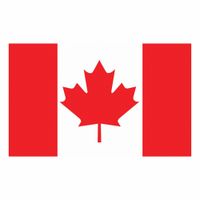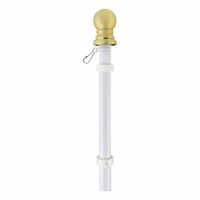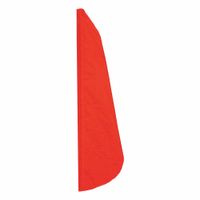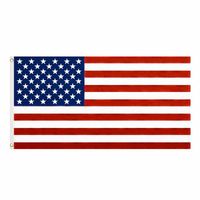Call +(254) 703 030 000 / 751 483 999 / 721 704 777
- Home
- Office Supplies
- Flags Flag Poles
.....Read More
Frequently Asked Questions
What is the proper way to display the US flag on a flagpole?
The proper way to display the US flag on a flagpole involves several key guidelines to ensure respect and adherence to the US Flag Code. The flag should be hoisted briskly and lowered ceremoniously. When displayed on a single flagpole, the US flag must always be at the peak, above any other flags. If flown with other flags on adjacent poles, the US flag should be hoisted first and lowered last, and it should be to the observer's left.
When displaying multiple flags on the same halyard, the US flag should be at the top. If the flags are of different nations, they should be on separate poles of equal height, with the US flag to the observer's left. The flag should never touch the ground or any object beneath it and should be illuminated if displayed at night. If not illuminated, it should be taken down at sunset.
In times of national mourning, the flag is flown at half-staff. To do this, it should first be hoisted to the peak for an instant and then lowered to the half-staff position. Before being lowered for the day, it should again be raised to the peak. On Memorial Day, the flag is displayed at half-staff until noon and then raised to full staff.
The flag should not be used as a drapery, covering, or for any advertising purposes. It should be kept clean and in good condition, and when it becomes worn or tattered, it should be retired in a dignified manner, preferably by burning. These practices ensure the flag is displayed with the honor and respect it deserves.
How should flags be displayed during national holidays?
During national holidays, flags should be displayed with respect and adherence to specific protocols to honor the occasion and the nation. The flag should be hoisted briskly and lowered ceremoniously. It should be displayed from sunrise to sunset unless illuminated during nighttime. On buildings, the flag should be displayed on a staff or pole, positioned prominently. If displayed indoors, it should be placed to the right of the speaker or stage.
When multiple flags are displayed, the national flag should be at the center and highest point. If displayed with other national flags, they should be of equal size and on separate staffs of the same height. The national flag should not be used as drapery or for covering a platform. It should not touch the ground or be used for any commercial purposes.
On vehicles, the flag should be fixed to the right fender or chassis. During parades, it should be carried aloft and free, never flat or horizontally. If displayed on a wall, the union (the blue field with stars in the U.S. flag) should be at the top left from the observer's perspective.
In case of inclement weather, an all-weather flag should be used. On certain holidays, such as Memorial Day in the U.S., the flag is flown at half-staff until noon and then raised to full staff.
These guidelines ensure the flag is displayed with dignity, reflecting national pride and unity during significant holidays.
What are the rules for flying a flag at half-staff?
Flying a flag at half-staff is a mark of respect or mourning. The rules for flying a flag at half-staff in the United States are primarily governed by the U.S. Flag Code. Here are the key guidelines:
1. **Occasions for Half-Staff**: The flag is flown at half-staff on specific occasions such as the death of principal figures of the U.S. government and state governors, as directed by the President or state governors. It is also observed on Memorial Day until noon, and on national days of mourning.
2. **Presidential Proclamations**: The President can issue a proclamation to fly the flag at half-staff for the death of prominent figures or tragic events. The duration is typically specified in the proclamation.
3. **State Governors**: Governors can order the flag to be flown at half-staff in their respective states for local officials or residents, often in response to a significant event or death.
4. **Raising and Lowering the Flag**: When raising the flag to half-staff, it should first be hoisted to the peak for an instant and then lowered to the half-staff position. When lowering the flag for the day, it should again be raised to the peak before it is fully lowered.
5. **Duration**: The flag is flown at half-staff for 30 days after the death of a President or former President, 10 days for a Vice President, Chief Justice, or Speaker of the House, and from the day of death until interment for other officials.
6. **Local and Private Observances**: Organizations and individuals may choose to fly the flag at half-staff to honor local figures or events, though this is not mandated by the Flag Code.
These guidelines ensure a uniform practice of respect and mourning across the nation.
How do you properly fold a US flag?
To properly fold a U.S. flag, follow these steps:
1. **Preparation**: Two people are needed. Hold the flag waist-high, parallel to the ground, with one person at each end.
2. **Fold in Half Lengthwise**: Fold the lower half of the stripe section over the blue field (Union), keeping the edges aligned.
3. **Fold in Half Again**: Fold the flag lengthwise again, bringing the folded edge to meet the open edge, ensuring the Union is on the outside.
4. **Start Triangular Folds**: Begin at the striped end. Fold the lower right corner up to the top edge, forming a triangle.
5. **Continue Folding**: Fold the outer point inward, parallel to the open edge, creating another triangle. Continue this triangular folding pattern along the entire length of the flag.
6. **Complete the Fold**: When near the end, tuck the remaining fabric into the pocket formed by the folds to secure it.
7. **Final Appearance**: The folded flag should resemble a triangle with only the blue field and stars visible, symbolizing the original thirteen colonies.
This method ensures the flag is treated with respect and maintains its dignity.
What is the correct order for displaying multiple flags on a single pole?
When displaying multiple flags on a single pole, the correct order is determined by flag protocol, which varies by country. However, a general guideline is as follows:
1. **National Flag**: The national flag of the country where the pole is located should always be at the top. It takes precedence over all other flags.
2. **State or Provincial Flag**: If applicable, the flag of the state or province should be placed below the national flag.
3. **Other Flags**: Any other flags, such as organizational, corporate, or international flags, should be placed below the state or provincial flag. These should be arranged in order of precedence, which can be determined by the importance or relevance of the flags to the event or location.
4. **Equal Size and Condition**: All flags should be of equal size and in good condition. No flag should be larger or in better condition than the national flag.
5. **No Inferior Position**: The national flag should not be placed in an inferior position or be overshadowed by other flags.
6. **Respect and Dignity**: All flags should be treated with respect and dignity, ensuring they are not displayed in a manner that could be considered disrespectful.
7. **Local Regulations**: Always check local laws and regulations, as they may have specific requirements or variations in protocol.
By following these guidelines, you ensure that the display of multiple flags on a single pole is respectful and adheres to established flag etiquette.
How do you install a flagpole in your yard?
1. **Choose Location**: Select a spot with enough clearance from trees, power lines, and buildings. Ensure it’s visible and accessible.
2. **Check Regulations**: Verify local zoning laws or HOA rules regarding flagpole installation.
3. **Select Flagpole**: Choose a flagpole material (aluminum, fiberglass, etc.) and height suitable for your yard and flag size.
4. **Gather Tools and Materials**: You’ll need a shovel, level, gravel, concrete mix, water, a mixing tool, and a tape measure.
5. **Dig the Hole**: Dig a hole 2-3 times the diameter of the pole and about 1/4 the pole’s height deep. For example, a 20-foot pole requires a 5-foot deep hole.
6. **Prepare the Ground Sleeve**: Insert the ground sleeve into the hole. Ensure it’s centered and plumb using a level.
7. **Add Gravel**: Pour 6 inches of gravel into the hole for drainage.
8. **Mix Concrete**: Prepare concrete according to package instructions.
9. **Pour Concrete**: Fill the hole around the sleeve with concrete, leaving a few inches at the top for soil. Use a stick to remove air pockets.
10. **Align and Secure**: Ensure the sleeve remains plumb as the concrete sets. Adjust as necessary.
11. **Cure Concrete**: Allow the concrete to cure for at least 24-48 hours.
12. **Install Flagpole**: Once cured, insert the flagpole into the sleeve. Secure it according to the manufacturer’s instructions.
13. **Attach Flag**: Use the halyard to attach the flag to the pole.
14. **Final Adjustments**: Ensure the pole is straight and the flag moves freely.
15. **Maintenance**: Regularly check for wear and tear, and clean the pole as needed.
What are the guidelines for displaying state flags with the US flag?
When displaying state flags with the U.S. flag, the following guidelines should be observed:
1. **Position of Honor**: The U.S. flag should always be in the position of honor. It should be placed at the center and at the highest point when displayed with a group of state flags.
2. **Same Height and Size**: When state flags are displayed with the U.S. flag, they should be of approximately equal size and flown at the same height on separate staffs.
3. **Order of Precedence**: State flags should be arranged in alphabetical order from left to right as viewed by the observer, starting from the U.S. flag's right.
4. **Single Staff Display**: If state flags are displayed on the same staff as the U.S. flag, the U.S. flag should be at the peak, above any state flags.
5. **Crossed Staffs**: When displayed with crossed staffs, the U.S. flag should be on the observer's left, and its staff should be in front of the state flag's staff.
6. **Indoor Display**: In a row of flags, the U.S. flag should be at the center and highest point. If displayed on a podium, the U.S. flag should be on the speaker's right (audience's left).
7. **Half-Staff**: When the U.S. flag is flown at half-staff, state flags should also be flown at half-staff.
8. **Illumination**: If displayed at night, the U.S. flag should be properly illuminated.
9. **Respect and Condition**: All flags should be in good condition, free from damage or wear.
These guidelines ensure respect and proper protocol when displaying the U.S. flag alongside state flags.
How do you care for and maintain a flag?
To care for and maintain a flag, follow these steps:
1. **Cleaning**: Regularly clean the flag to prevent dirt buildup. For synthetic flags, machine wash on a gentle cycle with mild detergent. Hand wash delicate or older flags. Rinse thoroughly and air dry to prevent shrinkage or damage.
2. **Repair**: Inspect the flag for tears or fraying. Repair small tears promptly by sewing them with matching thread. For extensive damage, consider professional repair or replacement.
3. **Storage**: Store the flag in a cool, dry place away from direct sunlight to prevent fading. Fold it neatly to avoid creases and use acid-free tissue paper for added protection. Avoid plastic bags, which can trap moisture and cause mildew.
4. **Display**: When displaying the flag outdoors, ensure it is securely attached to the pole to prevent it from being torn by the wind. Use a flagpole with a rotating mechanism to prevent tangling. Take the flag down during severe weather to avoid damage.
5. **Respectful Handling**: Always handle the flag with respect. Avoid letting it touch the ground. When raising or lowering, do so slowly and ceremoniously.
6. **Retirement**: When a flag becomes too worn to display, retire it respectfully. The preferred method is burning in a dignified ceremony. Many veterans' organizations offer flag retirement services.
By following these guidelines, you can ensure your flag remains in good condition and is displayed with the respect it deserves.
What are the rules for displaying flags indoors?
When displaying flags indoors, certain protocols should be followed to show respect and maintain proper etiquette:
1. **Position of Honor**: The national flag should always be in a position of prominence. If displayed with other flags, it should be placed to its own right (the observer's left).
2. **Multiple Flags**: When displayed with other flags, the national flag should be at the center and at the highest point. If on the same level, it should be to the right of all other flags.
3. **Crossed Staffs**: When displayed with another flag against a wall with crossed staffs, the national flag should be on the right and its staff should be in front.
4. **Flat Display**: When hung flat against a wall, the union (blue field) should be at the top and to the flag's own right (observer's left). If displayed vertically, the union should be at the top and to the observer's left.
5. **Behind a Speaker**: When displayed behind a speaker, the flag should be above and behind the speaker, with the union to the observer's left.
6. **On a Staff**: When displayed on a staff in a public auditorium or meeting place, the flag should be to the speaker's right as they face the audience. If on the floor, it should be to the audience's right.
7. **No Obstruction**: The flag should not be draped over furniture, podiums, or other objects.
8. **Respectful Display**: The flag should never touch the ground, be used as a covering, or have any mark, insignia, letter, word, figure, design, picture, or drawing placed upon it.
9. **Illumination**: If displayed at night, the flag should be properly illuminated.
These guidelines ensure the flag is displayed with the dignity it deserves.
How do you choose the right size flag for a flagpole?
To choose the right size flag for a flagpole, consider the following guidelines:
1. **Flagpole Height**: The height of the flagpole is the primary factor in determining the flag size. A common rule of thumb is that the length of the flag should be about one-quarter to one-third the height of the flagpole. For example, a 20-foot flagpole typically accommodates a 3x5 foot flag, while a 30-foot pole can handle a 4x6 foot flag.
2. **Location and Visibility**: Consider the location where the flagpole is installed. In open areas with high visibility, a larger flag may be appropriate to ensure it stands out. Conversely, in confined spaces, a smaller flag may be more suitable to avoid overwhelming the surroundings.
3. **Wind Conditions**: Assess the typical wind conditions in the area. Larger flags exert more force on the flagpole, especially in high winds, which can lead to damage. In windy areas, it might be prudent to choose a smaller flag or a more durable material to withstand the conditions.
4. **Aesthetic Balance**: Ensure the flag is proportionate to the flagpole and the surrounding environment. A flag that is too large can look disproportionate, while a flag that is too small may not be as impactful.
5. **Purpose and Regulations**: Consider the purpose of the flag display. For ceremonial or official purposes, there may be specific regulations or guidelines regarding flag size. Check any local or organizational rules that might dictate flag dimensions.
6. **Material and Durability**: Choose a flag made from durable materials suitable for the local climate. This ensures longevity and reduces the need for frequent replacements.
By considering these factors, you can select a flag size that is both functional and visually appealing for your flagpole.






